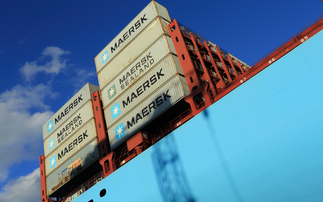John Aitken of SEAaT argues an emissions trading scheme is the best way for the global shipping industry to become sustainable
In the same way as other industries strive to reduce their carbon footprints, the sector that underpins 95 per cent of the world's trade - shipping - must do likewise. For this to happen, we need global collaboration and engineering innovation supported by regulation that applies to all vessels, regardless of their flag.
2011 is shaping up to be an important year for shipping. United Nations agency International Maritime Organisation (IMO) appears to have laid the groundwork with its recent Energy Efficiency Design Index (EEDI), a meaningful step forward for the industry and no mean feat, considering the challenge of finding agreement between developed and developing countries, as seen at the IMO and UN Framework Convention on Climate Change talks.
EEDI adoption signals real progress and sends a clear message that the IMO is serious about reducing emissions. This is no more than a first step, however. Now that the EEDI has been made mandatory, the path is clear for discussion of a practical approach to targeted emissions reduction via market-based measures, including the Emissions Trading Scheme (ETS).
An ETS is essential if shipping is to avoid following in the steps of the automotive industry, where improved efficiencies are being achieved, but actual volumes of emissions have steadily increased.
Another lesson we can learn comes from the aviation sector, whose well-documented difficulties in implementing the EU's aviation ETS are a stark warning of the political challenges presented by attempting to introduce a regional scheme to address a global issue. A shipping ETS must be global, rather than regional, and to deliver this we must work together - and that includes businesses and regulators, and both developing and developed countries.
The cornerstone of any attempt to reduce emissions must involve actual emissions measurement. These must be verifiable if meaningful emissions reduction targets are to be achieved. This is not just about the architecture of the future fleet, but also the operations of the existing one. Clearly, there are many discussions still to be had, and it pays all parties to be involved.
Success with the EEDI does not equate to any real-world success in reducing shipping's GHG footprint, given the sheer volume of new-build vessels coming online before EEDI will be implemented. The young global fleet, with an average age of between eight and 10 years, contains latent efficiency that could be accessed now, using retrofit clean technology. Reports vary, but according to DNV, 15 per cent is generally considered a good estimate of efficiencies that can be delivered through existing technologies.
Basic economics means the search for profitability gains is already driving the industry towards ever-greater efficiency, and shipping companies are already applying their operational and engineering expertise to that end. A steady stream of efficiency technologies and strategies are being developed: hull coating systems, air lubrication, propeller designs, just-in-time virtual arrival and waste heat recovery.
These are all an increasingly viable means of delivering not only reduced emissions for ship owners but also significant cost savings from reduced fuel bills. Barriers to take-up of these are eroding as their costs fall and operational experience grows, making them more accessible to firms seeking competitive advantage.
But if there are commercial drivers for clean technology take-up, why is an ETS necessary? The reason is, an ETS will deliver carbon footprint reductions across the sector, while unregulated commercial drivers or levy-based schemes will produce only relative reductions, such as tonnes of CO2 per tonne mile. In the predicted shipping growth scenario, a tonnes of CO2 per tonne mile reduction less than the increase of tonne miles carried is simply not good enough.
Whichever form regulation takes, clear targets based on solid data are essential to solving the problem. This data must come from actual emissions, not based on a design index for new-build vessels. Incentives to build more efficient ships and operate them more efficiently can both be delivered by placing a price on carbon emissions.
These may be challenging commercial times for the shipping industry, but it is imperative it can demonstrate progress on climate change. With the appropriate regulation, global collaboration and the skill of engineers and innovators, we can achieve what is expected of us.
John Aitken is secretary general of cross-industry group Shipping Emissions Abatement and Trading






